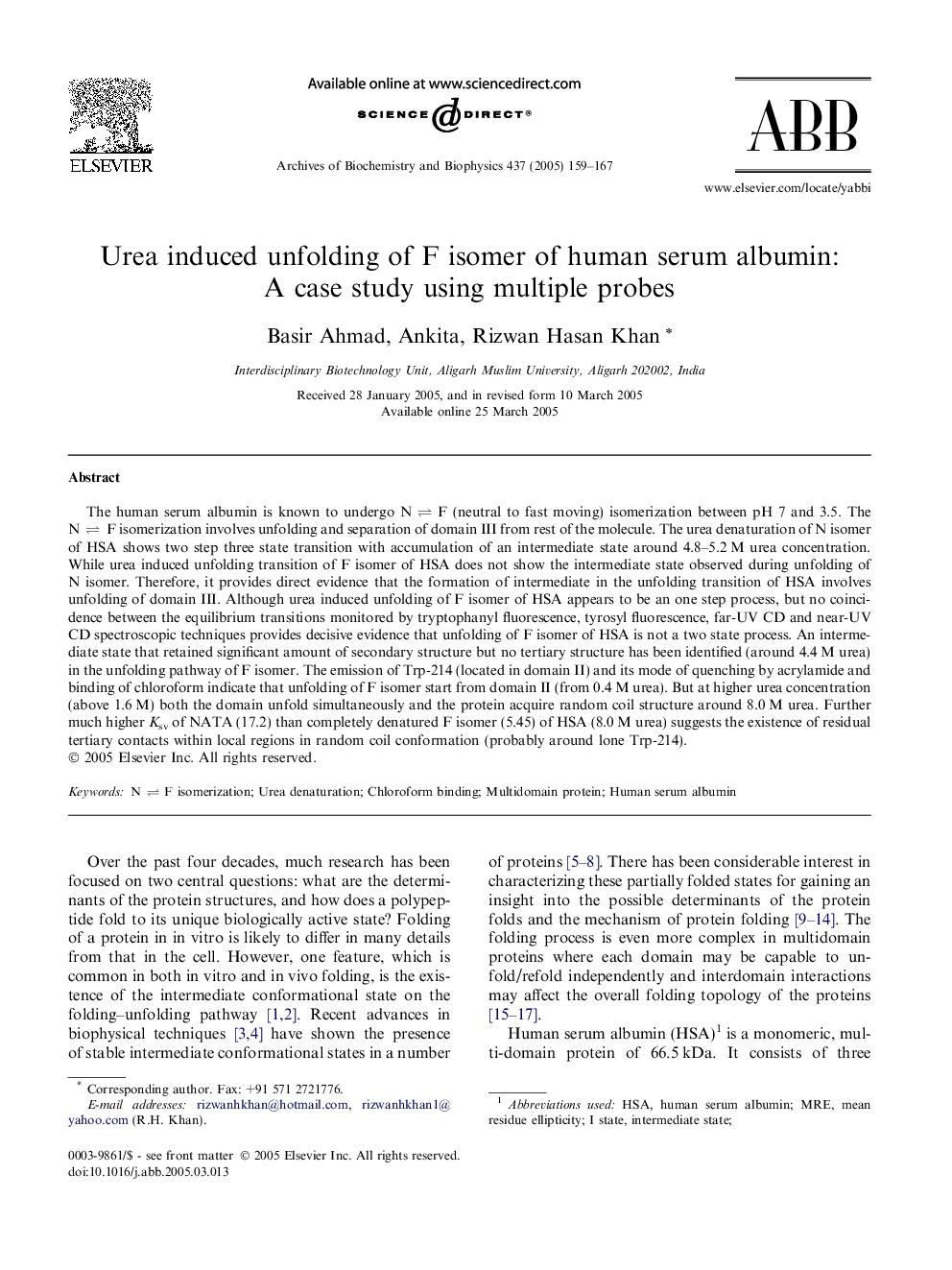| Article ID | Journal | Published Year | Pages | File Type |
|---|---|---|---|---|
| 9882217 | Archives of Biochemistry and Biophysics | 2005 | 9 Pages |
Abstract
The human serum albumin is known to undergo N â F (neutral to fast moving) isomerization between pH 7 and 3.5. The N â F isomerization involves unfolding and separation of domain III from rest of the molecule. The urea denaturation of N isomer of HSA shows two step three state transition with accumulation of an intermediate state around 4.8-5.2 M urea concentration. While urea induced unfolding transition of F isomer of HSA does not show the intermediate state observed during unfolding of N isomer. Therefore, it provides direct evidence that the formation of intermediate in the unfolding transition of HSA involves unfolding of domain III. Although urea induced unfolding of F isomer of HSA appears to be an one step process, but no coincidence between the equilibrium transitions monitored by tryptophanyl fluorescence, tyrosyl fluorescence, far-UV CD and near-UV CD spectroscopic techniques provides decisive evidence that unfolding of F isomer of HSA is not a two state process. An intermediate state that retained significant amount of secondary structure but no tertiary structure has been identified (around 4.4 M urea) in the unfolding pathway of F isomer. The emission of Trp-214 (located in domain II) and its mode of quenching by acrylamide and binding of chloroform indicate that unfolding of F isomer start from domain II (from 0.4 M urea). But at higher urea concentration (above 1.6 M) both the domain unfold simultaneously and the protein acquire random coil structure around 8.0 M urea. Further much higher Ksv of NATA (17.2) than completely denatured F isomer (5.45) of HSA (8.0 M urea) suggests the existence of residual tertiary contacts within local regions in random coil conformation (probably around lone Trp-214).
Related Topics
Life Sciences
Biochemistry, Genetics and Molecular Biology
Biochemistry
Authors
Basir Ahmad, Ankita Ankita, Rizwan Hasan Khan,
